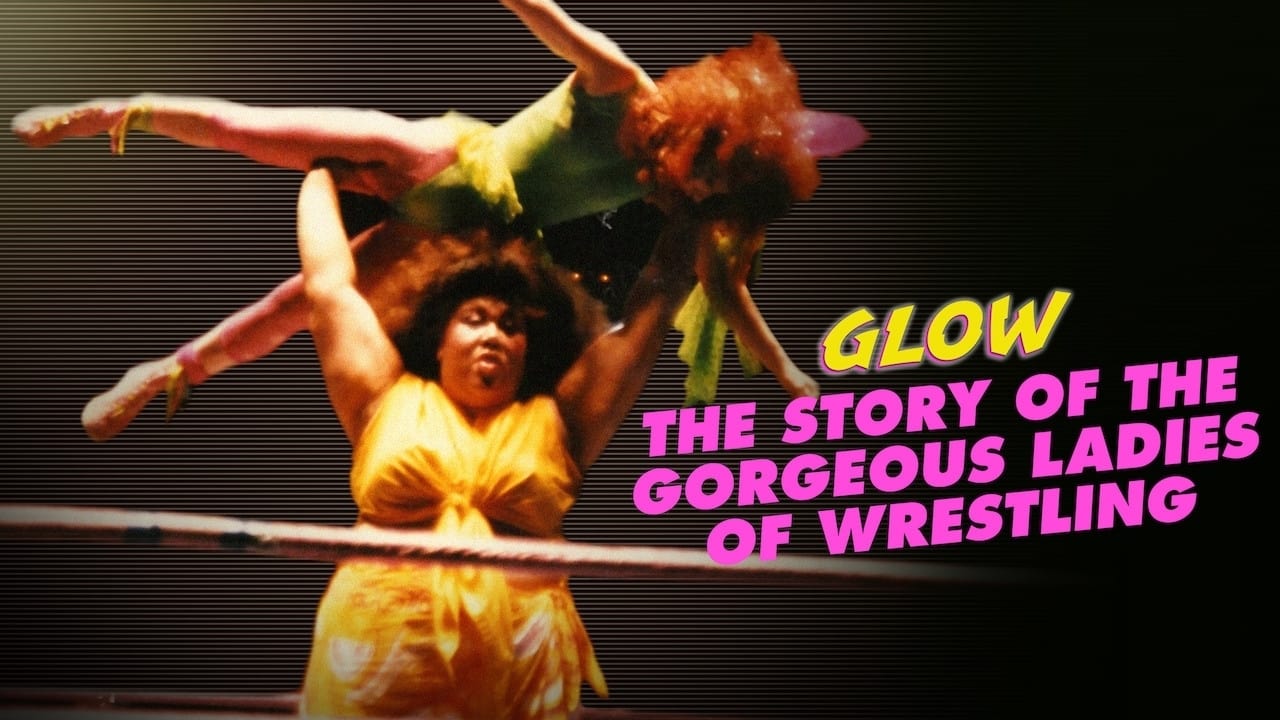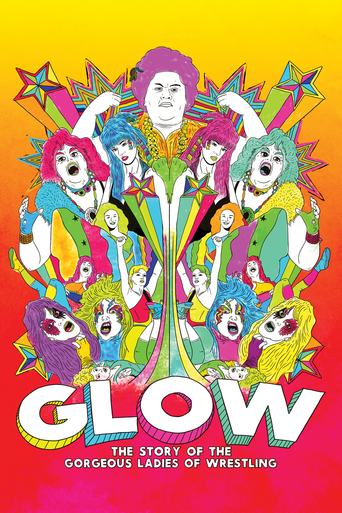

"GLOW: The Story of The Gorgeous Ladies of Wrestling" chronicles the rise and fall of the first ever all-female wrestling show through the stories of those who lived it.With Matt Cimber on board, and Jackie Stallone of all people out front, this looks like a lot of fun. Why did I not see this in the 1980s? Did my local station not carry it? This takes the cheese of the WWF and kicks it up a notch. And, in a small way, is sort of prescient about women's wrestling.I do wish Cimber would have agreed to being interviewed. Between this, his films, and his relationships, he is one of the more interesting people in Hollywood and is very much unknown to the general public. We really need to get him on the record more.
... View MoreIf you love GLOW Netflix and our documentary please be sure to follow the Original Ladies of GLOW @GLOWwrestling xoSee the new generation of GLOW on NF and see how it compares to Classic GLOW. We would Love your input on Twitter! Do you want to see the original Ladies of GLOW on The New Netflix GLOW in at least cameos message NetlflixGLOW and tell then you want the classic ladies to be a part of the show too!
... View MoreI quite enjoyed the new Netflix series "GLOW," so I was curious to watch this documentary about the real Gorgeous Ladies of Wresting. This documentary is apparently what inspired the excellent Netflix series. Back in the 80s, I was a regular WWF watcher, especially when they partnered with MTV for their Rock and Wresting events, but I wasn't a regular viewer of GLOW, although it was on my radar. Despite being unfamiliar with the wrestlers or any of their real-life backstories, I found this film highly entertaining and heartwarming. The women worked really hard, were very proud of what they'd done, and formed some lifelong bonds. From the women they interviewed, it sounds like most of them did not continuing wrestling, although I did learn that WWF wrestler Ivory came out of GLOW. Overall, this documentary is nothing deep, but it does tell a touching story of a lot of women carving a space out for themselves in the world (a story with lots of rasslin', outrageous costumes, goofy rapping, and fond reminiscing).
... View MoreIn 1986, the wrestling industry would be changed in ways it could never foresee by the creation and rise of the TV show GLOW. The show stood for "The Gorgeous Ladies of Wrestling" and bled eighties vibes, invoking elements of camp, colorful costumes, over-the-top, self-referential comedy sketches, and several beautiful women fighting for glory. 'Glory of what?,' you may ask. I don't know, but there was lingerie and skimpy outfits involved.For six years, GLOW hosted over five-hundred matches, welcomed millions of viewers in addition to what seemed to be escalating viewership with each match, and was a breakthrough for women's wrestling. The taboos GLOW went on to break were unforeseeable, in a time when women's wrestling wasn't so much as controversial but simply inconceivable.The female wrestlers themselves were taken not from wrestling tryouts but your average casting call referral from their agents. All the women involved were aspiring actresses who were informed of the role for a new TV show through their agents and got the part that way. The wrestlers were divided into two groups, the "good" girls and the "bad" girls, with the "good" girls being coached by Jackie Stallone, the mother of Sylvester Stallone of all people. The girls' main trainer was Mando Guerrero, an energetic and animated man who was able to put one of the girls in a headlock the first day and make her cry, shattering all preconceived notions that GLOW was a fake program.The show was made possible thanks to funding and producing by Hollywood legend Matt Cimber and Riviera Hotel and Casino owner Meshulam Riklis, who allowed GLOW to be filmed in the hotel. Without the support and labor of Cimber and Riklis, GLOW would've likely never materialized and a pitch for the show/idea would've been laughed out of the boardroom. Director Brett Whitcomb is fortunate enough to get to speak with many of the wrestlers, many of whom have gone on to live successful lives in fields that aren't wrestling. Some are real estate agents, some are still actors, and those chosen to remain in wrestling have gone on to achieve commendable success. Many of the wrestlers, despite a laborious work ethic and unpredictable wrestling matches, still remained in shape and in good physical condition.However, as can be inferred, some are still scarred from wrestling in some way. Consider "Mountain Fiji," one of the icons of the GLOW. "Fiji" was given her name because she was built like a mountain, with her feet almost never leaving the floor during a match and her incredible build working in her favor when faced against a puny blonde girl. Yet, "Fiji"'s build has done nothing but work against her in the future; she has almost lost the ability to walk and remains bedridden in a nursing home, most of the time.Another wrestler with similar issues is "Matilda the Hun," again, another wrestler known for her hefty build and incredible strength. "Matilda" hasn't found herself in as bad shape as "Fiji," but she still struggles with the ability to adequately walk. When she began performing in GLOW, she was already thirty-five, which is when she should be contemplating retirement. She continued to wrestler for another fifteen years after. Here she is in her fifties, with subpar knees and the help of a wheelchair. Yet, she still reminds us that just because she's in a wheelchair doesn't mean she's weak.Despite incorruptible memories (the taboos the show broke, wrestler "Susie Spirit"'s arm breaking during a match, which spawns grotesque reactions), GLOW was abruptly cancelled in 1992. In 1990, Riklis had withdrew his support and ceased allowing the girls and trainers access to the Riveria Hotel and production was moved to a lesser warehouse nearby the hotel. Still, it seemed at the height of its popularity, GLOW was canned and the wrestlers were left without closure - no reunion, no farewell, no phone call, nothing.GLOW: The Story of the Gorgeous Ladies of Wrestling, even in a brief seventy-three minutes, nicely articulates what the organization was about, why it was unique, and goes the extra mile to humanize its wrestling subjects. Whitcomb has a nice, subtle way of shattering your judgments upon entering the film, completely making you forgo your thoughts on female wrestling and just having you see the subjects, the matches, and the characters behind the costumes in order to emerge a more knowledgeable person on the subject. In essence, that's what documentaries are supposed to do, and by definition, this one succeeds.Directed by: Brett Whitcomb.
... View More